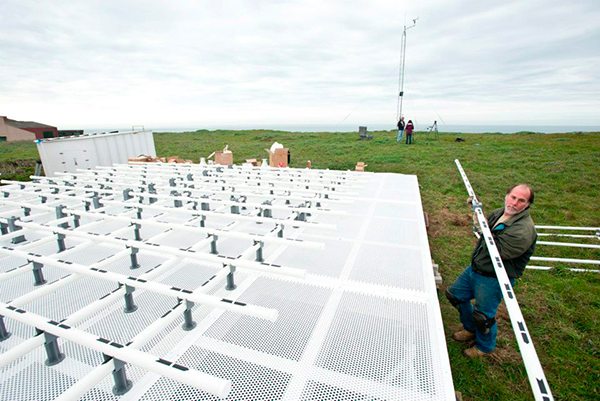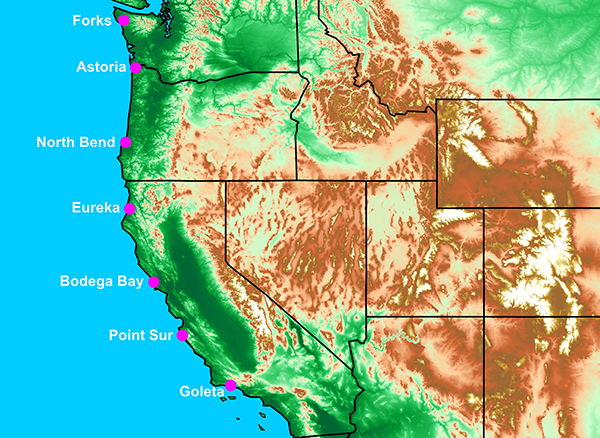A New West Coast 'Picket Fence' of Observations
July 27, 2016
The atmosphere above the Eastern Pacific Ocean, where many of the world's major weather and climate systems brew, is also one of the most poorly observed regions on Earth. This month in Santa Barbara, CA, engineers from the NOAA ESRL Physical Sciences Division (PSD) will install the last of seven semi-permanent, compact wind profilers, which create a "picket fence" of monitoring stations along the U.S. West Coast. The ¼-scale 449-MHz wind profilers are part of an unprecedented observing system to help address water resource and flood protection concerns.
Funded by the California Department of Water Resources and the U.S. Department of Energy, the network is a collection of over 100 sensors and instruments that monitor water vapor concentration, onshore moisture flux, freezing elevation, and soil moisture. All of these are important variables to monitor during atmospheric river events, which bring extreme precipitation to the West Coast. The ¼-scale wind profiler technology being used in this network was invented, assembled and deployed by ESRL engineers, who will also be responsible for operating and maintaining the network into the future.
The agencies sponsoring this network understand the importance of the detailed and continuous observations provided by the wind profilers, which are collocated with other instruments for the National Weather Service (NWS) watch/warning program for hazardous weather, renewable energy, and other applications such as fire weather. The collection of instruments at each wind profiler site is also referred to as an "atmospheric river observatory" because the data provided by the combined sensors measures the key atmospheric forcings associated with these often hydrologically significant events.
The data from the network are being transferred to MADIS, the NWS operational data collection system. PSD will also soon distribute a plugin for viewing the data in the AWIPS2 weather forecasting display and analysis package, once World Meteorological Organization (WMO) IDs are assigned to each station. It is likely that the impacts of the picket fence will extend well eastward in the U.S. via data assimilation into the suite of NWS weather forecast models. WMO IDs will also allow international data transfer through the Global Telecommunications System.
PSD was well positioned to build the West Coast picket fence because of their long history of atmospheric monitoring and research along the U.S. West Coast, extensive experience operating wind profilers worldwide for a variety of science field campaigns, and notable expertise in building wind profiler technology.
More Information
- Bulletin of the American Meteorological Society article highlighting coastal NC wind profiler deployment, also announces West Coast picket fence.
- NOAA Report evaluating advantages/disadvantages of 449-MHz and 915 MHz wind profilers for coastal weather applications.
- Video highlighting importance of atmospheric rivers to CA's water supply and installation of first 'picket fence' station at Bodega Bay.

